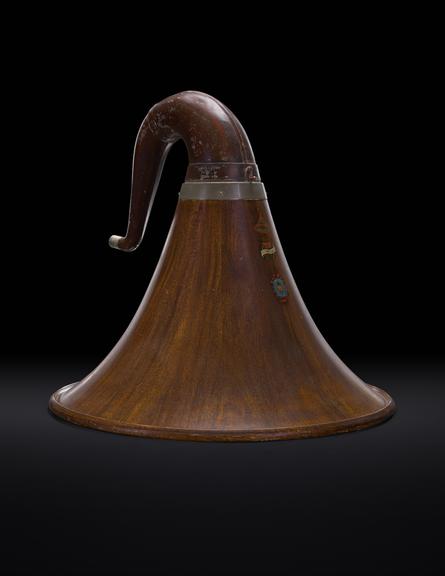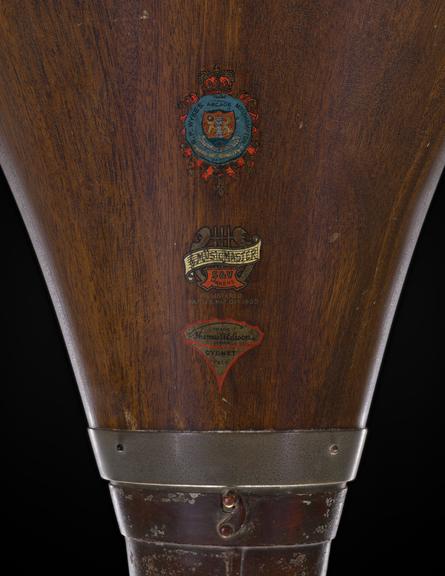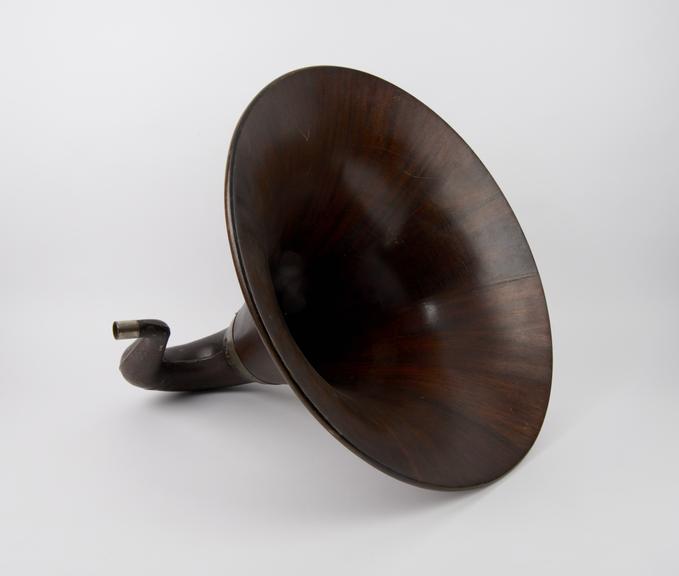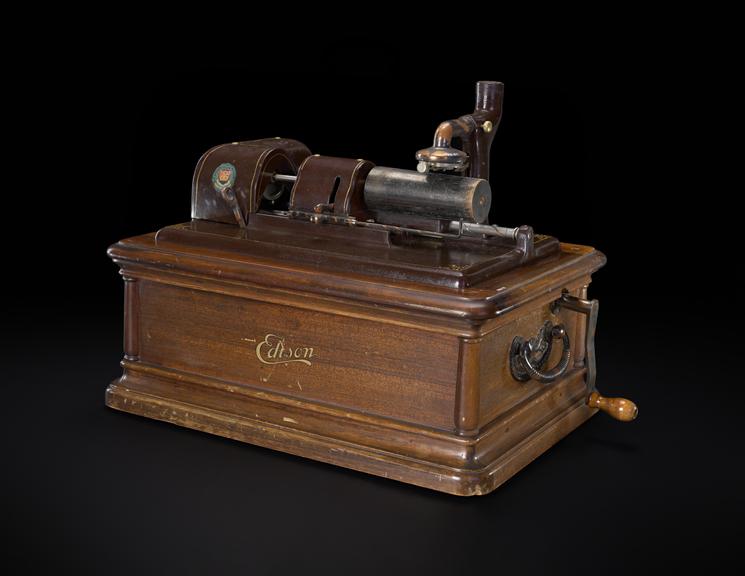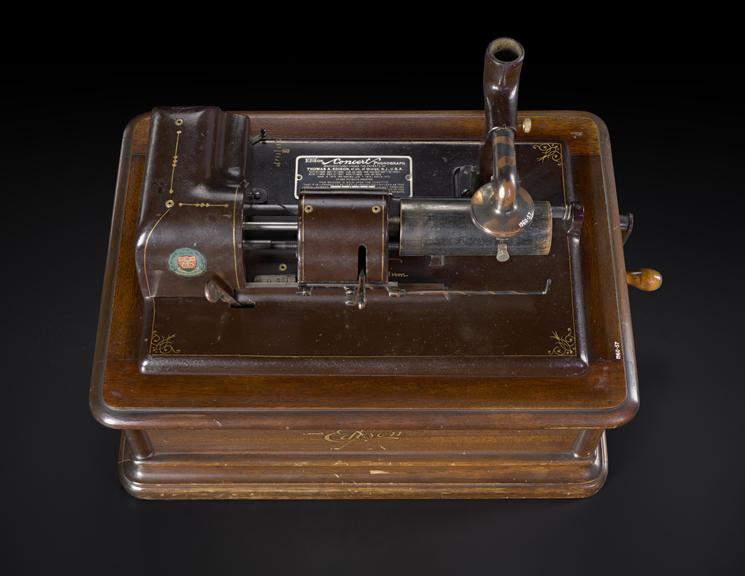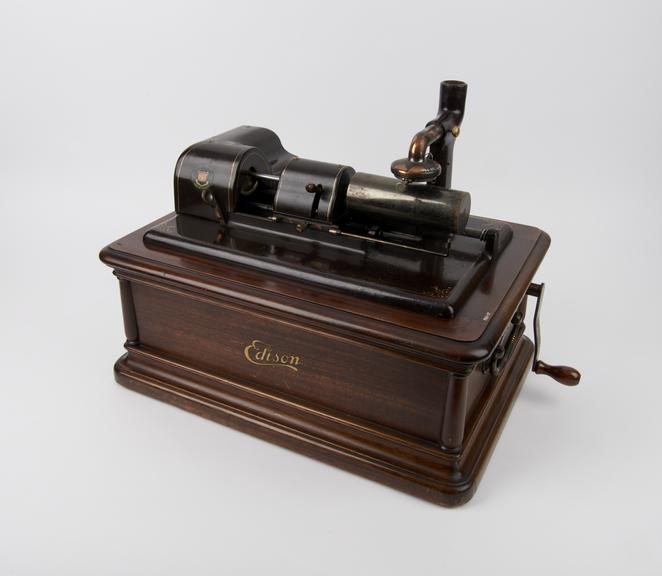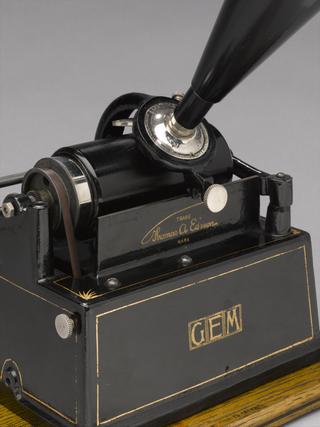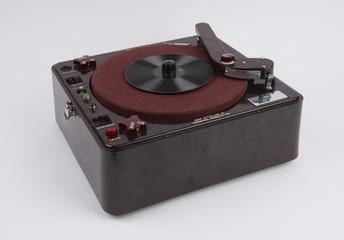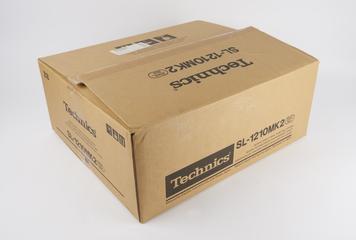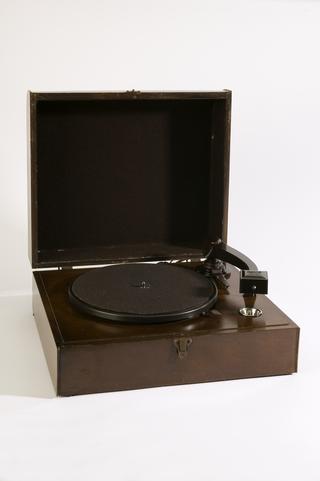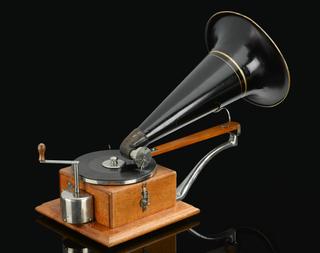Edison 'Concert' phonograph
- Made:
- 1910-1912 in United States
- maker:
- Thomas A. Edison Inc.







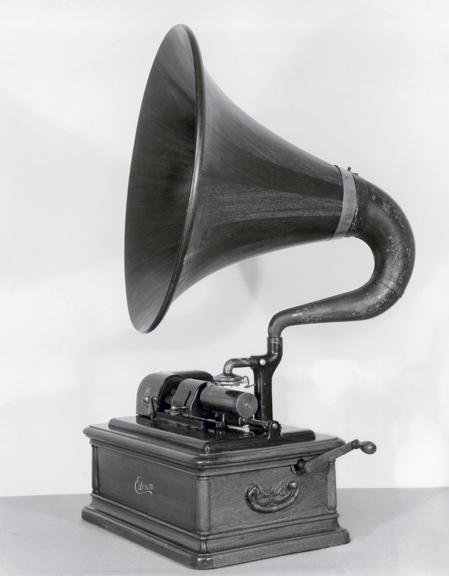
Edison Type A 'Concert' phonograph, model SM, with wax cylinders, by Thomas A. Edison Inc., American, 1910-1912
Thomas Edison introduced the ‘concert’ phonograph in 1899 to improve the volume levels the phonograph could achieve. Concert phonograph cylinders were larger than their standard counterpart, measuring 5 inches in diameter. This meant the recording would create a deeper cut into the wax and could achieve a higher speed, thus increasing the volume level.
However, the introduction of gold moulded records in 1902 improved the volume issue, and so concert cylinders were no longer necessary and their popularity waned. As a consequence, factory conversion kits could be purchased to enable concert phonographs to play standard sized cylinders. This is an example with a conversion kit.
Look closer
Edison 'Concert' phonographDetails
- Category:
- Sound Reproduction
- Object Number:
- 1960-57
- Materials:
- metal (unknown) and wax
- type:
- phonograph
- credit:
- Mrs. W.M. Sykes.
Parts
Horn for Edison 'Concert' phonograph
Horn for Edison Type A 'Concert' phonograph, model SM, by Thomas A. Edison Inc., American, 1910-1912.
- Measurements:
-
overall: 495 mm 545 mm, 1.535 kg
- Materials:
- wood (unidentified) , metal (unknown) and paint
- Object Number:
- 1960-57/2
- type:
- horn
- Image ©
- The Board of Trustees of the Science Museum
Phonograph cylinder
Phonograph cylinder, broken, inscription on end reads 'WAHINGTON POST & HIGH SCHOOL CADETS. SOUSA'S BAND Thomas A. Edison A PAT'D 9 4M-325'.
- Measurements:
-
overall: 106 mm 55 mm,
- Materials:
- wax
- Object Number:
- 1960-57/3
- type:
- phonograph cylinder
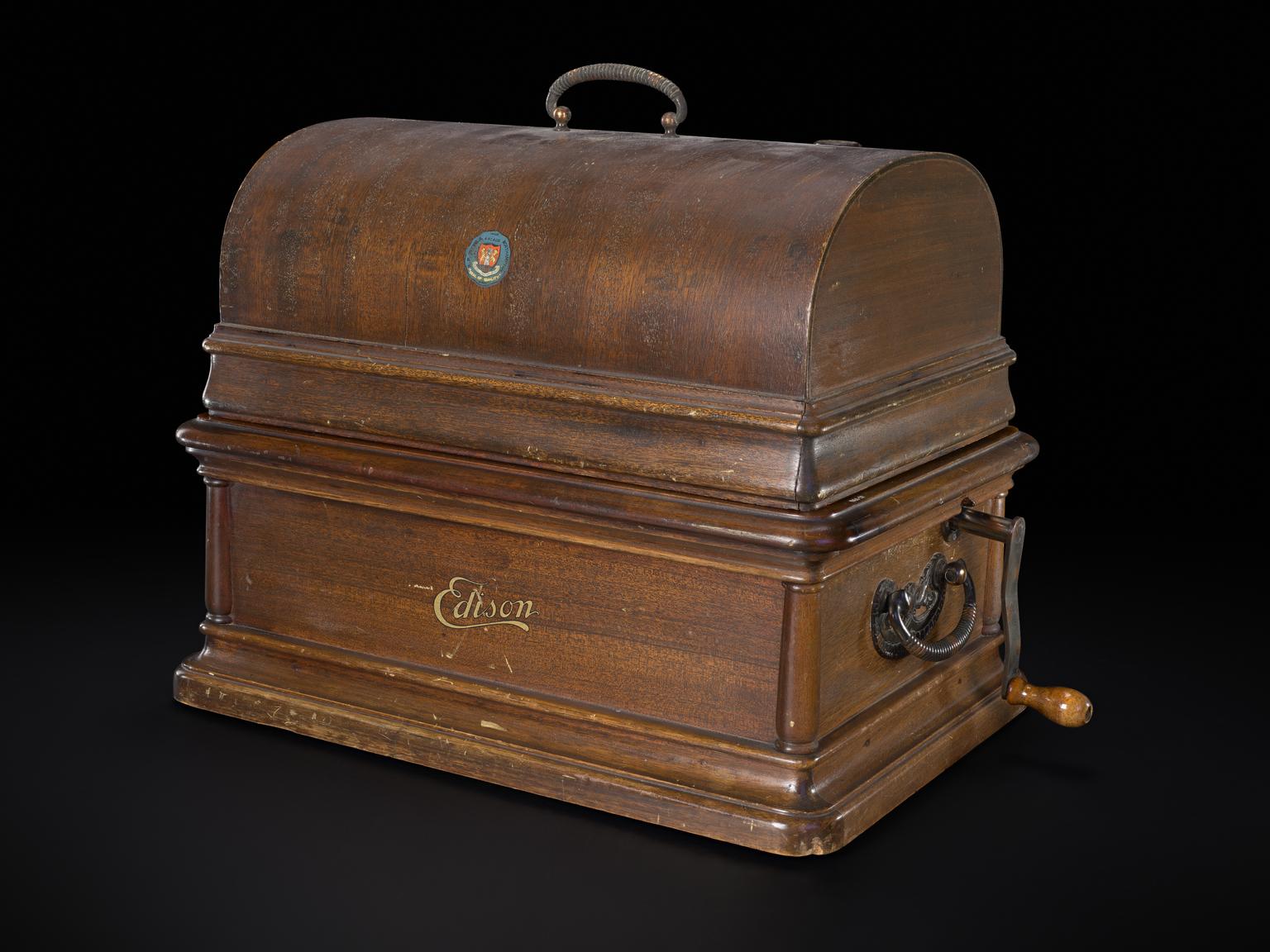
Lid for Edison 'Concert' phonograph
Lid for Edison Type A 'Concert' phonograph, model SM, by Thomas A. Edison Inc., American, 1910-1912.
- Measurements:
-
overall: 186 mm x 420 mm x 280 mm,
- Materials:
- wood (unidentified) , copper (alloy) and paint
- Object Number:
- 1960-57/4
- type:
- lids
- Image ©
- The Board of Trustees of the Science Museum
Main body of Edison 'Concert' phonograph
Main body of Edison Type A 'Concert' phonograph, model SM, by Thomas A. Edison Inc., American, 1910-1912.
- Measurements:
-
overall: 347 mm x 515 mm x 325 mm, 17.6 kg
- Materials:
- wood (unidentified) , copper (alloy) , metal (unknown) and paint
- Object Number:
- 1960-57/5
- type:
- phonograph
- Image ©
- The Board of Trustees of the Science Museum
